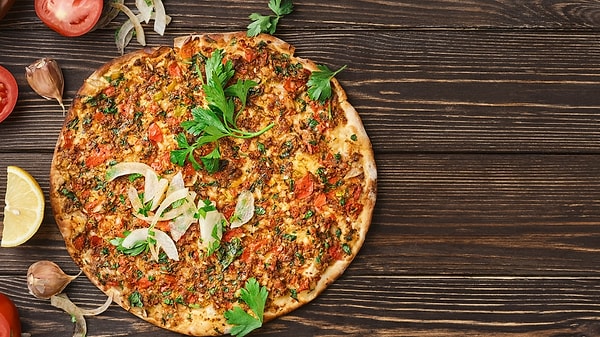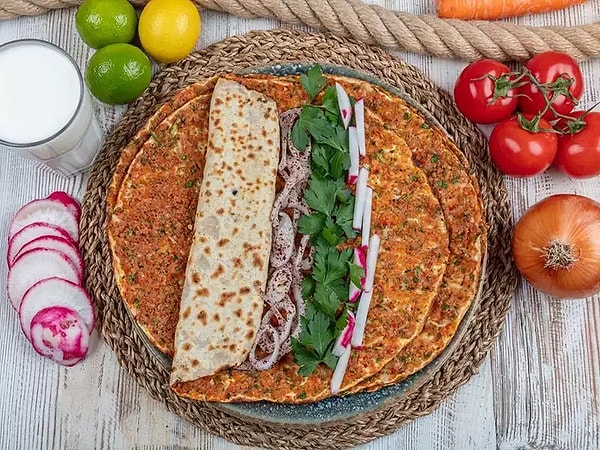Lahmacun: The Flavorful Delight of Turkish Cuisine
When it comes to exploring the rich tapestry of Turkish cuisine, Lahmacun stands out as a beloved and iconic dish. Often referred to as 'Turkish pizza,' Lahmacun is a delectable flatbread topped with a savory mixture of minced meat, aromatic herbs, and vibrant vegetables. Bursting with flavors and boasting a history deeply rooted in Turkish culinary heritage, Lahmacun has become a staple in both homes and eateries across the country. In this article, we will embark on a culinary journey to uncover the origins, ingredients, preparation, and cultural significance of this mouthwatering Turkish delight.
The Origins of Lahmacun:

Lahmacun traces its origins back to the southeastern region of Turkey, where it has been savored for centuries. The word 'Lahmacun' itself is derived from Arabic, with 'lahm' meaning meat and 'ajin' meaning dough. This savory dish is believed to have been influenced by the culinary traditions of the Levant region and migrated to Anatolia during the Ottoman Empire. Over time, Lahmacun evolved to incorporate local flavors and became an integral part of Turkish cuisine.
Ingredients and Preparation:

At the heart of Lahmacun lies the thin and crispy dough, which serves as the canvas for a flavorful topping. The dough is typically made with a combination of flour, water, yeast, olive oil, and salt. It is kneaded until smooth and elastic before being rolled out into thin rounds or ovals.
The topping, known as 'lahmacun harcı,' is where the magic happens. Traditionally, it consists of a mixture of finely minced lamb or beef, although variations with chicken or a combination of meats can also be found. The meat is seasoned with an array of aromatic spices such as cumin, paprika, Aleppo pepper, and garlic, which infuse the dish with a robust and fragrant profile. Freshly chopped parsley, onions, and tomatoes are also added to the mixture, lending a burst of freshness and enhancing the overall flavor.
To assemble Lahmacun, the dough is generously spread with a thin layer of the meat topping, ensuring an even distribution of flavors. It is then baked in a hot oven or on a hot griddle until the edges turn golden brown and the meat cooks to perfection. The result is a tantalizing combination of crispiness, juiciness, and aromatic goodness that tantalizes the taste buds.
Cultural Significance and Serving Traditions:

Lahmacun holds a special place in Turkish culture, as it transcends regional boundaries and is enjoyed throughout the country. It is a popular street food, often served from small food stalls or bakeries. The scent of freshly baked Lahmacun wafting through the air is enough to entice passersby and beckon them to indulge in this culinary delight.
In Turkish homes, Lahmacun is commonly prepared for gatherings and family meals. It is a dish that fosters a sense of togetherness, as family members often gather around the table to customize their Lahmacun with an array of accompanying ingredients. Common accompaniments include fresh lemon wedges, crisp lettuce, fragrant herbs like mint and parsley, and tangy pickles. These toppings can be added to the center of the Lahmacun, which is then rolled up and enjoyed as a flavorful wrap.
Lahmacun has also gained popularity internationally, with Turkish communities and food enthusiasts around the world embracing its deliciousness. It has become a menu staple in Turkish restaurants, showcasing the country's culinary prowess and introducing people to the authentic flavors of Turkey.
Variations and Adaptations:

While the traditional Lahmacun remains an all-time favorite, there are several variations and adaptations of Lahmacun that cater to different tastes and dietary preferences. One popular variation is the vegetarian Lahmacun, where the meat is substituted with a flavorful combination of vegetables such as eggplant, zucchini, bell peppers, and onions. This variation offers a lighter yet equally satisfying alternative, allowing vegetarians and vegans to indulge in the delights of Lahmacun.
Another adaptation is Lahmacun with cheese, which adds an extra layer of richness and creaminess to the dish. Cheese varieties such as feta, mozzarella, or Turkish kasar cheese are sprinkled over the meat topping before baking, resulting in a gooey, cheesy delight that adds a new dimension of flavor.
In recent years, Lahmacun has also inspired creative interpretations, blending elements of different cuisines to create unique fusion dishes. For example, Lahmajun-inspired pizzas can be found in some international eateries, where the traditional meat topping is combined with classic pizza ingredients like cheese, tomatoes, and basil, resulting in a delightful fusion of flavors.
Enjoying Lahmacun Beyond Borders:

Thanks to its irresistible taste and versatility, Lahmacun has transcended borders and gained recognition worldwide. Turkish restaurants and food establishments around the globe proudly serve this iconic dish, allowing individuals from different cultures to experience a slice of Turkish culinary heritage.
In addition to restaurants, home cooks and food enthusiasts have also embraced Lahmacun, incorporating it into their culinary repertoire. With readily available ingredients and simple preparation techniques, Lahmacun can be recreated in kitchens across the globe, bringing the authentic flavors of Turkey to dining tables far and wide.
Lahmacun has not only become a beloved dish but has also become a symbol of Turkish culture and hospitality.

Its presence in social gatherings, celebrations, and casual meals fosters a sense of community and shared enjoyment. Sharing a plate of Lahmacun with friends and loved ones creates lasting memories and strengthens bonds, making it more than just a dish—it becomes a vehicle for connection and togetherness.
In conclusion, Lahmacun represents the soul of Turkish cuisine, combining fragrant spices, fresh ingredients, and a crispy dough to create a culinary masterpiece. Its origins rooted in Turkish heritage, its adaptability to different tastes and dietary preferences, and its ability to bring people together make Lahmacun a true gem of Turkish gastronomy. Whether enjoyed from a bustling street stall or prepared with love in a home kitchen, Lahmacun continues to captivate taste buds and delight food lovers around the world, showcasing the richness and diversity of Turkish culinary traditions.
What do you like to put on top of your lahmacun? Tell us in the comments!
Keşfet ile ziyaret ettiğin tüm kategorileri tek akışta gör!


Send Comment